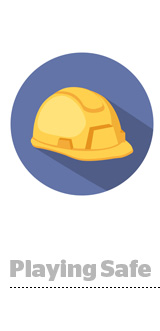
After more than a year in beta, Facebook is letting advertisers use third-party vendors to manage brand safety on its platform.
Facebook is putting a ring on its commitment to brand safety by adding a new badge for brand safety protection companies under its marketing partner program.
DoubleVerify and OpenSlate are the first two verification vendors to earn their stripes, both of which developed automated tools to deal with the particularities of Facebook’s proprietary platform. Integral Ad Science is in the process of developing a brand safety solution for Facebook.
“We see this as a huge step forward for advertisers looking for a consistent solution to protect their brand, regardless of what property or site they’re buying on,” said DoubleVerify CEO Wayne Gattinella.
But Facebook isn’t exactly like other properties or sites.
Facebook’s approach to brand safety centers on blacklists instead of whitelists, which many buyers prefer. With blacklists, advertisers must decide what to exclude – and that can be a lot of work to maintain.
“The concern over block lists in the past was the manual nature of making them,” said OpenSlate CEO Mike Henry.
But that’s becoming less of an issue, Henry said. OpenSlate’s tool assesses Facebook content that accepts in-stream video ads and lets advertisers create and manage dynamic block lists.
Similarly, DoubleVerify, which works across Instant Articles, Audience Network and in-stream video, uses the same automated tools as it would to help advertisers manage their brand safety controls for other inventory sources. And it automatically updates Facebook blocklists.
Facebook has slowly bolstered the brand safety controls it offers over the last couple of years in response to pressure from advertisers and agencies. In 2017, Facebook began testing a pre-campaign transparency tool that gives advertisers the opportunity to review where ads are going to run in advance, both on platform and off, and then to opt out of any placements they don’t like. Advertisers can also block specific content categories, like gambling, drugs or sex, for example.
But Facebook’s move to invite third parties is partially motivated by the recent influx of video inventory available since Facebook rolled out ad breaks Watch worldwide over the summer.
“If you look at the scale of video now and how it’s changed over the last six months since Facebook opened up monetization, the interest from advertisers has been surprisingly significant,” Henry said. “This is definitely becoming something TV advertisers are taking notice of.”
This post was syndicated from Ad Exchanger.


More Stories
Marketing Morsels: Hidden Valley Ranch, La-Z-Boy, Topps & More
Flashback: Jane Pauley and Deborah Norville Revisit Today’s 1989 Succession Drama
Ally Financial Revives ‘Banksgiving’ With A TikTok Twist